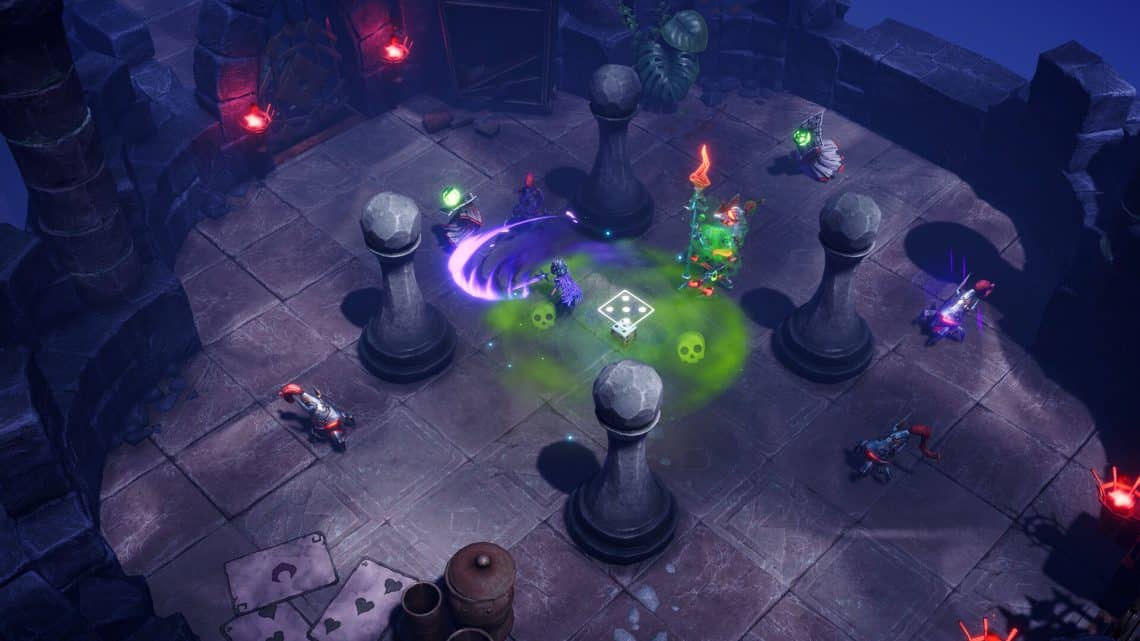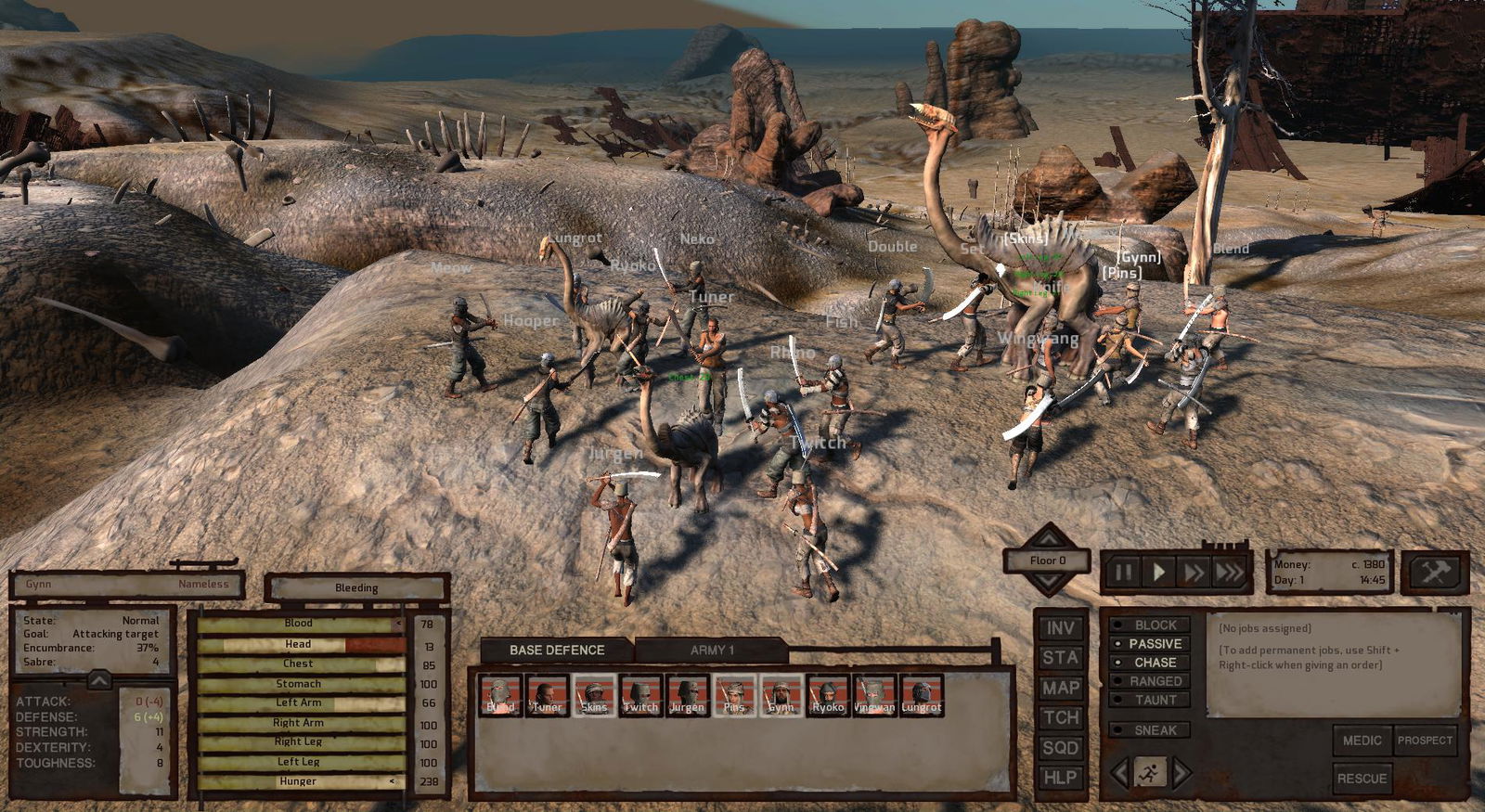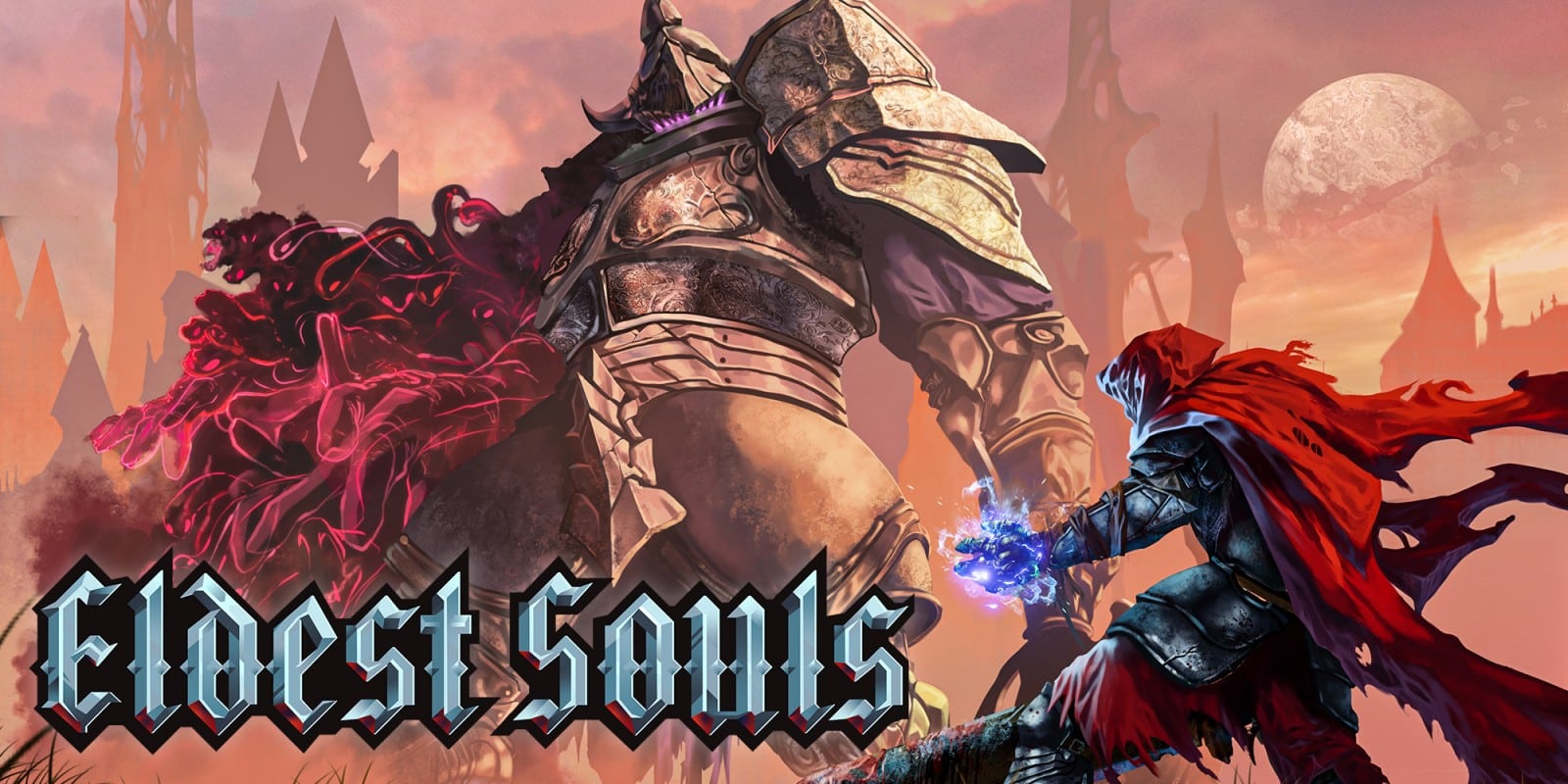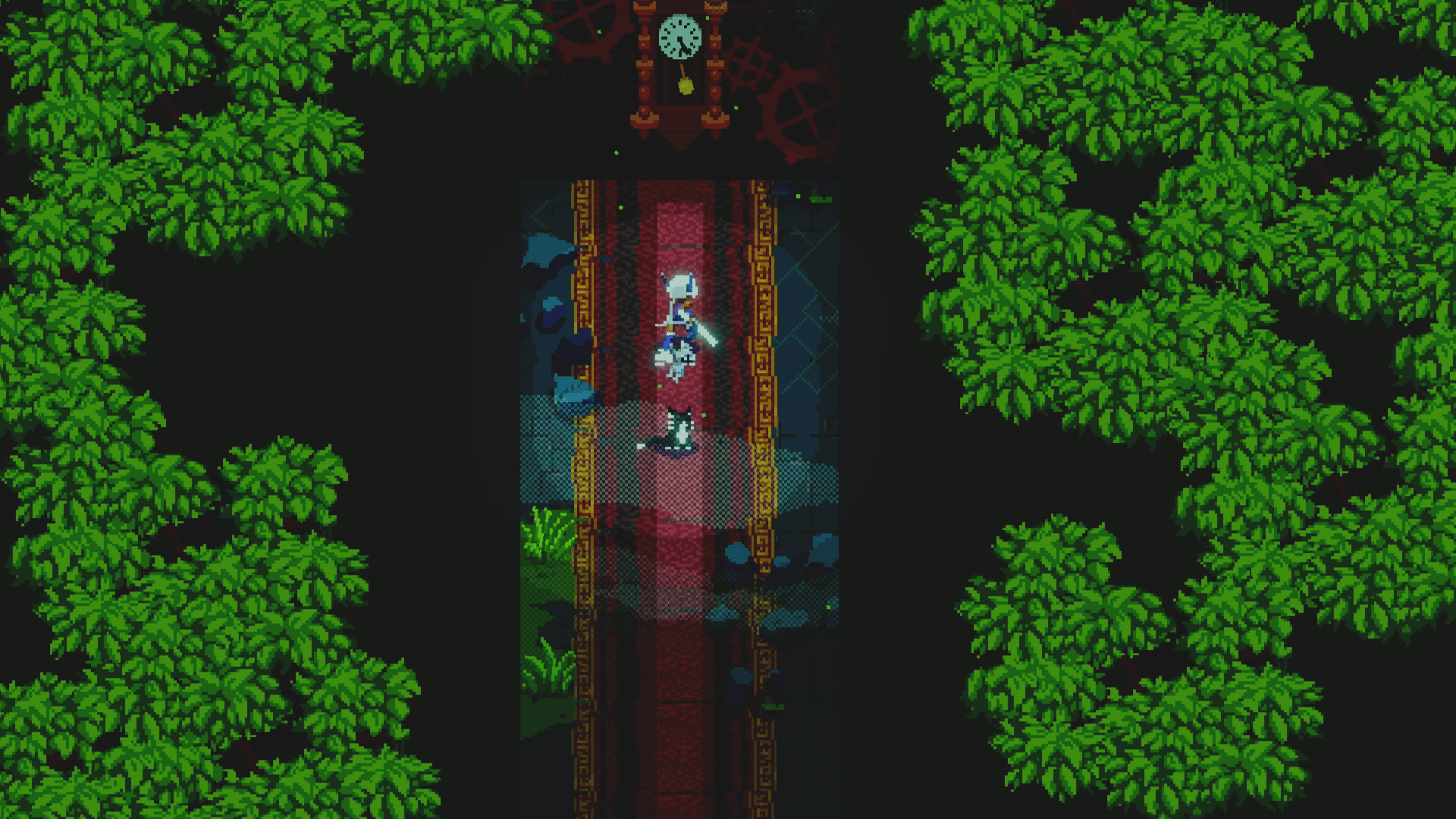Lost in Random The Eternal Die dropped on PC and other platforms some days ago, this bold and new approach separates itself from the original game in the series. The original is an action adventure game while this one decided to go the indie route and become a roguelike. The enjoyment is clearly enhanced if you have played the previous game, but even for people new to the series, you don’t need to play the original Lost in Random, although you will be missing out on an amazing work of art.
You don’t play as Even in this one, but rather, you play as the Queen of Random herself, who is still as edgy as ever but now in a smaller size thanks to the curse of the Dark Die. Your kingdom fell, and queen Aleksandra has been swallowed into the shadowy realm that Mare controls. The only solace that she has is Fortune a loyal diceling that accompanies her everywhere, and speaks in gibberish too being a clear comic relief character. A notable character that truly oozes humor is Rack, one of the common mechanical pawn enemies that you could fight in the original game, which plays the role of an unique weapon upgrade NPC with personality.
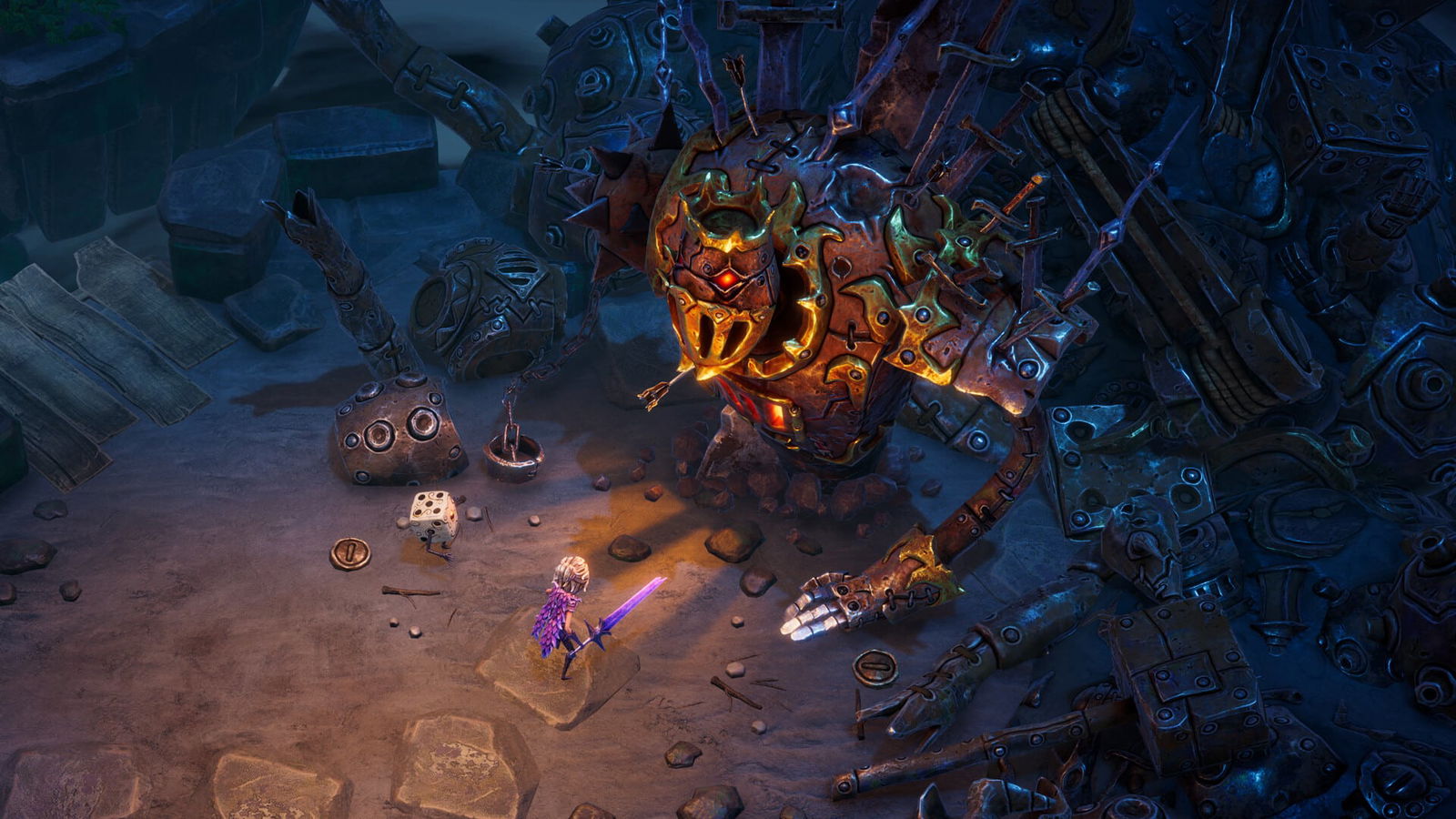
There’s lots of lore to the game, tied to the original iteration too, and its cool to see that the developers cared to create such a long winded tale about this colorful and varied cast of characters. All of them are connected in some way or shape, and it seems that queen Aleksandra has a fair share of frenemies and unlikely allies, each of them providing a different service at the hub spot, called Sanctuary, that you go each time you lose a run. Much to the like of other Roguelike games, you will die again and again and perhaps become familiar with all of them, most of the time they will unlock some more dialogue as you advance.
Most of this dialogue is tied to their relation with queen Aleksandra, and it seems that not many are fond of what she did to some of them, as it seems that she has imprisoned a fair share on Mare’s realm out of pure spite. In this world filled with Burton-like aesthetics, resources are even made from the negative feelings of those who inhabit the depths of Mare’s realm, which get seamlessly integrated as a gameplay mechanic becoming a resource. Mare feeds on this negative energy and his realm randomly twists and takes shape based on the mind of his victims.
Honestly, the world building is very fleshed out, and there’s many interesting tidbits, some of them connected to the original game, but they only enhance the enjoyment rather than make or break the plot of this game. As a spinoff it feels pretty divorced since it does not follow the same character as the original, which brings a new perspective needed to amplify the lore of the game. This definitely one of the biggest and most taken care of aspects of the game, and it shows that they did care cause there’s dev blogs that show this focus.
The gameplay is also quite addictive, the roguelike formula always beats me with its tempting gameplay loop, always wanting to have another final run to see if you can improve and go further. The action is tight, and despite it being like the majority of roguelikes, it does bring with it some very neat additions that feel original and are quite clever too. As mentioned before, Fortune is a very loyal diceling, to the point you can actually roll her on your enemies to do increased damage from afar, but to do it again you need to recover her from the place she landed.

Since the game is bound by the rules of randomness, not only are the lairs of Mare random each time you visit them from the hub, but you also receive a random card at the start of each run that you can opt to pick, this card can act as a secondary ability that can change the tide of your luck in combat, most of the time being a damage dealer with varied effects such as stunning enemies. Each time you roll Fortune, the amount of damage caused by her is random, based on the number she rolled, this can further be amplified, along with other aspects of your build too, by finding passive enhancements.
Passives are divided into pearls and relics, but it goes deeper than that, you have a grid where you need to match 3 colors to obtain percentage based boosts on your attributes. Pearls do help with color fixing to achieve that, while relics are passive abilities that are surrounded by a single to multi colored frame, careful positioning of them is key to mastering the passive system which is one of the most original ones I’ve seen so far in a roguelike. Lost in Random The Eternal Die truly shows some amazing ideas that I can’t seem to find in other games.
The bosses are well planned too, right at the end of the first floor which is quite extensive to explore, you end up finding a fight that feels reminiscent to Ornstein and Smough from the original Dark Souls. Perhaps the developers are big fans of the series or maybe its a coincidence, and I will admit there’s many times I lost to them, but winning in this game is satisfactory, and the drive to keep going is never ending.
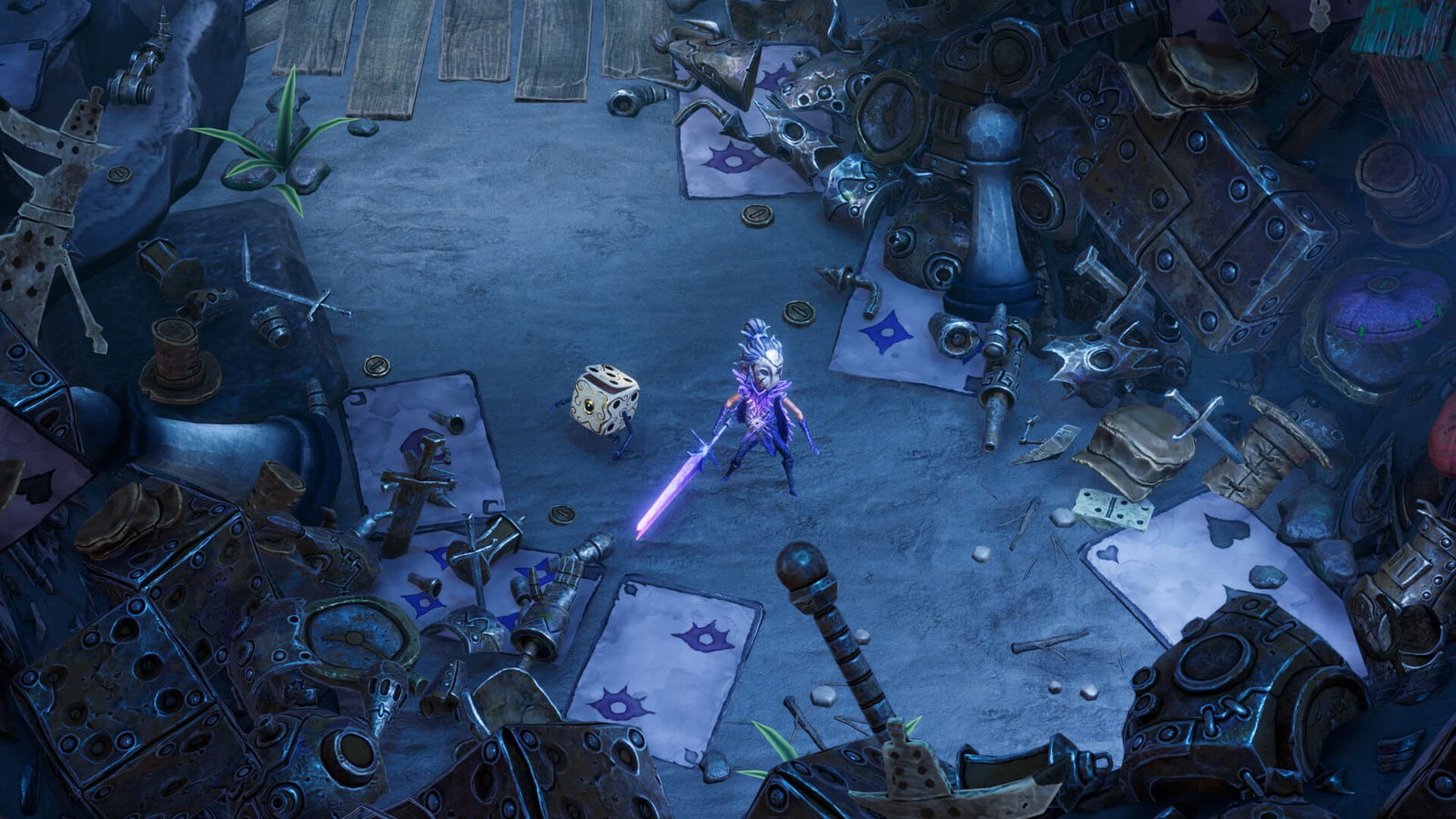
Provided you know how to master the passives system of Lost in Random The Eternal Die, and also you end up upgrading your base stats in the hub area, by farming Pip Dust and Cinders produced by the sorrow that Mare causes, you will end up becoming into the boss yourself. Pip Dust is a resource you can find in every run, and you have to use them on Sanctuary to upgrade your passives with an NPC called Aama, who truly seems to despise Aleksandra, and things are mutual. Lost in Random The Eternal Die is filled with interesting systems to the brim.
An issue with it would be the lack of build combinations you can do, yes, there’s some neat variety of spells, passives, and a total of 4 weapons with unique movesets, the bow being my favorite one to use. When you analyze the Pip Dust passives however, you realize there’s pretty much 2 styles of playing which the game wants you to respect, you are either a menace to normal dungeon mobs that spawn in each room, or you are a boss destroyer. You can try mixing and matching them, but doing that will end up with a set that focuses in many things at the same time, which will be the death of many runs.
For those who know gaming to a t, min maxing is pretty much the rule in many games, so trying to get wacky with builds that don’t mesh well together can often lead to a quick defeat. It is cool that all of the abilities in the game feel unique and balanced, but I surely miss the days where you could do some genuinely and unintended broken combo that the developers never expected. Leaving that aside, the gameplay is very good, it just feels like it needs some more chaos happening that would go well with the overall setting of the game.
The art direction of Lost in Random The Eternal Die is magnificent, blending the Tim Burton style with some cartoonish graphics that truly fit together. The world of Lost in Random is properly represented, and it shows that the people behind it care about the lore of it. Lost in Random is a vast and interconnected universe, yet, when you play these games the simple to follow plot makes up for that fact. Lost in Random is a dark setting, with some overall dark tones here and there, but Lost in Random The Eternal Die decides to have fun with things and character situations.
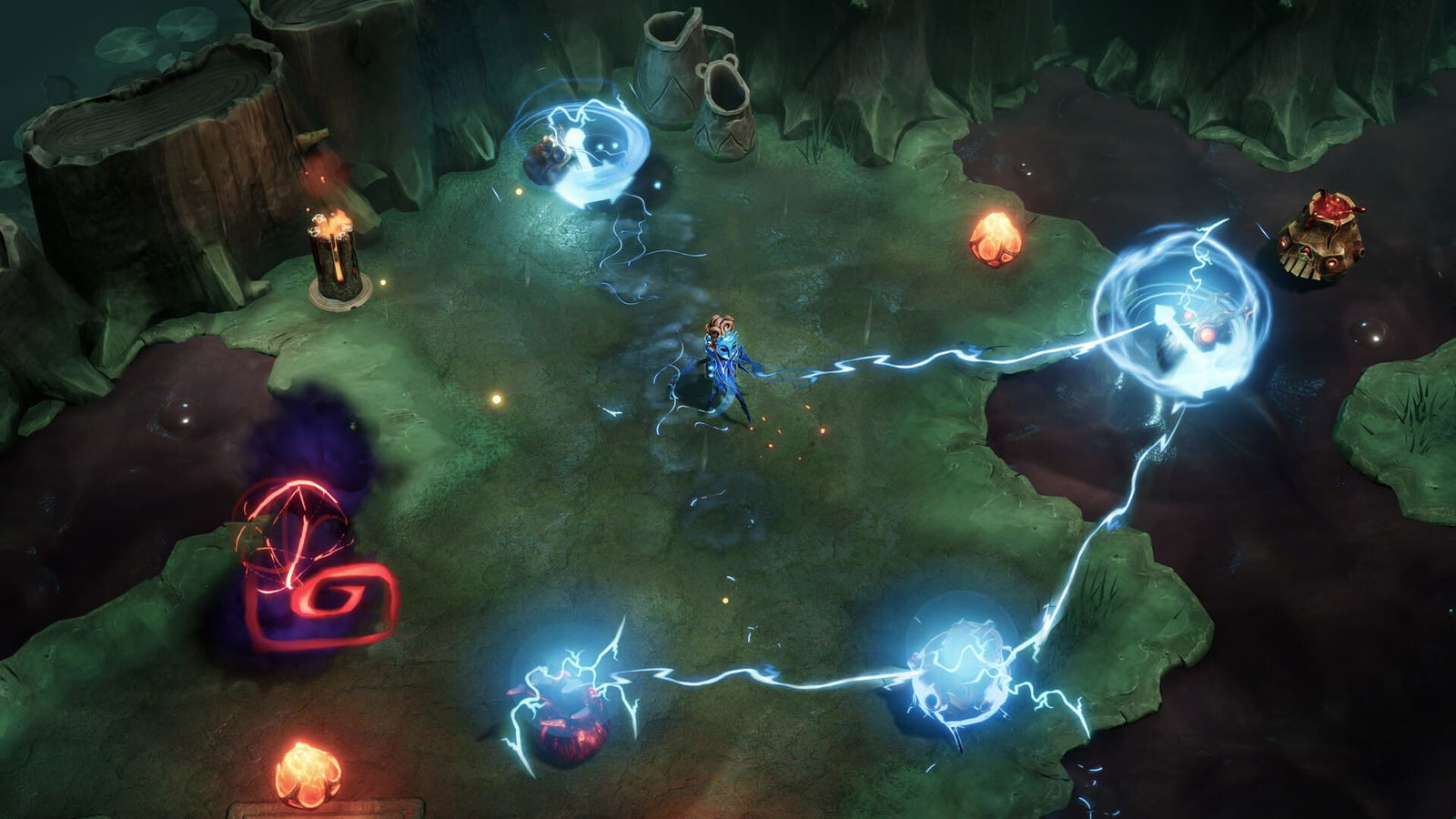
Scenario variety is on point, and each stage feels fully different, each with its own slew of enemies and hazards, however, one thing to criticize the game for is the lack of different enemy patterns, all the encounter rooms often boil down to a neatly packed army of enemies that spawn from Mare’s corruption. Often times, you find that each room contains a similar pattern of threats with nothing that is particularly new or that evolves. Lost in Random The Eternal Die sometimes alternates this by adding trap rooms, or sacrifice rooms similar to the ones in Binding of Isaac, but it does not feel like there’s enough variety in that front to feel 100% original.
Another thing that might surprise people about it, is the fact that the people behind Lost in Random are actually involved with the comics and animation industry is a big scale. Ryan North, who worked on Adventure Time, is responsible for the writing of it, which took me by surprise when I was reading the credits after the ending. I felt there was something familiar in the dialogue of the characters, and this long winded story about redemption of the main character in Lost in Random The Eternal Die felt familiar in a way.
Blake Robinson was the composer for this too, and he worked on The Stanley Parable, one game everyone needs to try out at least once. The soundtrack of Lost in Random The Eternal Die fits well with the overall dark aesthetic of the game, and the melodic swings between danger and calm as you traverse each room of the dungeon are always a neat addition in my book. However, I do have to add that the soundtrack was just fine, nothing really caught much of my attention aside from that nice tidbit.
Lost in Random The Eternal Die Review – Verdict
Lost in Random The Eternal Die: Lost in Random The Eternal Die brings some very neat ideas mostly for the upgrade system, which is very unique. Lost in Random The Eternal Die does suffer from some design inconveniences that push it away from being the perfect roguelike, while the roster of abilities and passives is of quality and well balanced, it does not hit enough nails in the head to be chaotic enough. This is thankfully countered by the fact that the action in each room is intense, and the groups of enemies and bosses tend to be feral enough to put a good challenge, you will definitely not be clearing this one with just a few rounds. – Hiro
[Editor’s Note: Lost in Random The Eternal Die was reviewed on PC and a copy was provided to us for review purposes.]

